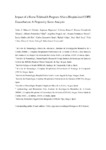Mostrar o rexistro simple do ítem
Impact of a home telehealth program after a hospitalized COPD exacerbation: a propensity score analysis
| dc.contributor.author | Marcos, Pedro J. | |
| dc.contributor.author | Represas Represas, Cristina | |
| dc.contributor.author | Ramos, Cristina | |
| dc.contributor.author | Cimadevila Álvarez, Blanca | |
| dc.contributor.author | Fernández Villar, Alberto | |
| dc.contributor.author | Fraga Liste, Angélica | |
| dc.contributor.author | Fernández Nocelo, Susana | |
| dc.contributor.author | Quiles del Río, Javier | |
| dc.contributor.author | Zamarrón Sanz, Carlos | |
| dc.contributor.author | Golpe, Rafael | |
| dc.contributor.author | Abal Arca, José | |
| dc.contributor.author | Calvo Álvarez, Uxío | |
| dc.contributor.author | Pértega-Díaz, Sonia | |
| dc.contributor.author | García Comesaña, Julio | |
| dc.date.accessioned | 2022-06-17T11:34:17Z | |
| dc.date.available | 2022-06-17T11:34:17Z | |
| dc.date.issued | 2020-06-27 | |
| dc.identifier.citation | Marcos PJ, Represas Represas C, Ramos C, Cimadevila Álvarez B, Fernández Villar A, Fraga Liste A, Fernández Nocelo S, Quiles Del Río J, Zamarrón Sanz C, Golpe R, Abal Arca J, Calvo Álvarez U, Pértega S, García Comesaña J. Impact of a home telehealth program after a hospitalized COPD exacerbation: a propensity score analysis. Arch Bronconeumol. 2022 Jun;58(6):474-481. | es_ES |
| dc.identifier.issn | 0300-2896 | |
| dc.identifier.uri | http://hdl.handle.net/2183/30954 | |
| dc.description.abstract | [Abstract] Introduction: Currently there is lack of data regarding the impact of a home telehealth program on readmissions and mortality rate after a COPD exacerbation-related hospitalization. Objective: To demonstrate if a tele-monitoring system after a COPD exacerbation admission could have a favorable effect in 1-year readmissions and mortality in a real-world setting. Methods: This is an observational study where we compared an intervention group of COPD patients treated after hospitalization that conveyed a telehealth program with a followance period of 1 year with a control group of patients evaluated during one year before the intervention began. A propensity-score analyses was developed to control for confounders. The main clinical outcome was 1-year all-cause mortality or COPD-related readmission. Results: The analysis comprised 351 telemonitoring patients and 495 patients in the control group. The intervention resulted in less mortality or readmission after 12 months (35.2% vs. 45.2%; hazard ratio [HR] 0.71 [95% CI=0.56-0.91]; p=0.007). This benefit was maintained after the propensity score analysis (HR=0.66 [95% CI=0.51-0.84]). This benefit, which was seen from the first month of the study and during its whole duration, is maintained when mortality (HR=0.54; 95% CI=[0.36-0.82]) or readmission (subdistribution hazard ratio [SHR] 0.66; 95% CI=[0.50-0.86]) are analyzed separately. Conclusion: Telemonitoring after a severe COPD exacerbation is associated with less mortality or readmissions at 12 months in a real world clinical setting. | es_ES |
| dc.language.iso | eng | es_ES |
| dc.publisher | Elsevier | es_ES |
| dc.relation.uri | https://doi.org/10.1016/j.arbres.2020.05.030 | es_ES |
| dc.subject | COPD | es_ES |
| dc.subject | Exacerbation | es_ES |
| dc.subject | Mortality | es_ES |
| dc.subject | Readmission | es_ES |
| dc.subject | Telemedicine | es_ES |
| dc.subject | Telemonitoring | es_ES |
| dc.title | Impact of a home telehealth program after a hospitalized COPD exacerbation: a propensity score analysis | es_ES |
| dc.type | info:eu-repo/semantics/article | es_ES |
| dc.rights.access | info:eu-repo/semantics/openAccess | es_ES |
| UDC.journalTitle | Archivos de Bronconeumología | es_ES |
| UDC.volume | 58 | es_ES |
| UDC.issue | 6 | es_ES |
| UDC.startPage | 474 | es_ES |
| UDC.endPage | 481 | es_ES |
Ficheiros no ítem
Este ítem aparece na(s) seguinte(s) colección(s)
-
INIBIC-ECB - Artigos [50]






